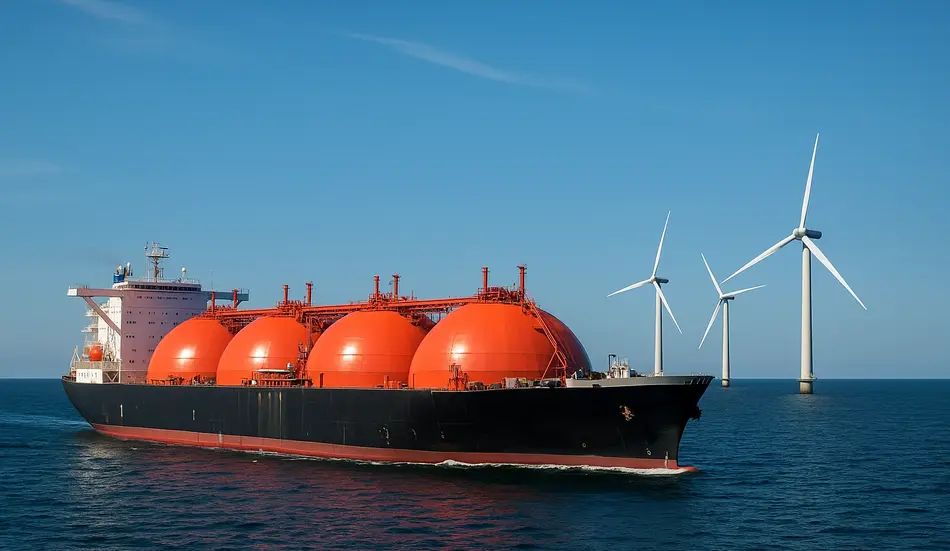Introduction: The Revolutionary US Energy Trade Deal
The United States has secured a historic US energy trade deal that will fundamentally reshape global energy markets and establish America as the world’s premier energy exporter. This landmark agreement, worth an unprecedented $750 billion, will see the European Union purchase massive quantities of American liquefied natural gas (LNG) over the coming years, marking a dramatic shift away from Russian energy dependence.
This comprehensive analysis examines the far-reaching implications of this US energy trade deal, from its immediate economic impact to its long-term strategic significance. The agreement represents not just a commercial transaction but a fundamental realignment of global energy geopolitics, with profound implications for American jobs, infrastructure development, and international relations.
Table of Contents
The Scope and Scale of the US Energy Trade Deal
Unprecedented Volume and Value
The US energy trade deal represents a quantum leap in American energy exports, dwarfing previous agreements in both scale and strategic importance.
Key Deal Metrics:
- Total Value: $750 billion over the agreement period
- Current EU Imports: Approximately $125 billion annually
- Projected Increase: Doubling of energy imports from the US
- Primary Focus: Liquefied natural gas (LNG) exports
- Strategic Goal: Reducing European dependence on Russian energy
The Transition from Russian Dependence
The US energy trade deal addresses a critical strategic vulnerability that has long concerned European policymakers and American allies.
Transition Benefits:
- Energy Security: Reducing reliance on Russian gas supplies
- Political Independence: Strengthening European autonomy
- Economic Diversification: Creating multiple energy supply sources
- Strategic Partnership: Deepening US-EU economic ties
- Market Stability: Providing reliable, long-term energy contracts
Timeline and Implementation
The US energy trade deal will be implemented over several years, requiring significant infrastructure development and regulatory coordination.
Implementation Phases:
- Immediate: Regulatory approvals and contract finalization
- Short-term: Infrastructure upgrades and capacity expansion
- Medium-term: Full-scale LNG export operations
- Long-term: Sustained energy partnership development
Economic Impact and Job Creation
Domestic Economic Benefits
The US energy trade deal will generate substantial economic benefits across multiple sectors of the American economy.
Economic Impact Areas:
- Energy Sector Growth: Expansion of LNG production and export facilities
- Infrastructure Development: New pipelines, terminals, and processing plants
- Manufacturing Boost: Increased demand for energy equipment and technology
- Service Sector: Growth in logistics, transportation, and support services
- Regional Development: Economic revitalization in energy-producing states
Employment Opportunities in Energy
The US energy trade deal will create thousands of new jobs across the energy value chain, from exploration to export.
Job Creation Sectors:
- Exploration and Production: Geologists, engineers, and field workers
- Processing and Refining: Plant operators and technical specialists
- Infrastructure Development: Construction workers and project managers
- Transportation and Logistics: Pipeline operators and shipping personnel
- Support Services: Maintenance, safety, and administrative roles
Regional Economic Development
The US energy trade deal will particularly benefit energy-producing regions, creating economic opportunities in states like Texas, Pennsylvania, and North Dakota.
Regional Benefits:
- Texas: LNG export terminals and pipeline infrastructure
- Pennsylvania: Natural gas production and processing facilities
- North Dakota: Energy extraction and transportation projects
- Gulf Coast: Port facilities and export infrastructure
- Alaska: New exploration and production opportunities
Infrastructure Requirements and Challenges
Critical Infrastructure Needs
The US energy trade deal success depends on significant infrastructure development to support increased LNG exports.
Infrastructure Priorities:
- LNG Export Terminals: New facilities to handle increased export volumes
- Pipeline Networks: Expanded capacity to transport gas to export points
- Processing Facilities: Upgraded plants to meet export specifications
- Port Infrastructure: Enhanced facilities for LNG tanker operations
- Storage Capacity: Additional facilities for strategic reserves
Permitting and Regulatory Challenges
The US energy trade deal implementation faces significant regulatory and permitting hurdles that must be addressed.
Regulatory Considerations:
- Environmental Reviews: Comprehensive assessments of infrastructure projects
- Safety Standards: Enhanced protocols for LNG handling and transportation
- Community Impact: Addressing local concerns about development
- International Regulations: Compliance with maritime and trade laws
- Federal Coordination: Streamlining approval processes
Technology and Innovation Requirements
The US energy trade deal will drive innovation in energy technology and artificial intelligence applications.
Technology Needs:
- AI-Powered Exploration: Advanced algorithms for resource discovery
- Smart Infrastructure: IoT-enabled monitoring and control systems
- Efficiency Optimization: Technology to maximize resource extraction
- Safety Systems: Advanced monitoring and emergency response capabilities
- Data Analytics: Comprehensive tracking and optimization platforms
Global Energy Market Implications
Market Dynamics and Pricing
The US energy trade deal will significantly impact global energy markets and pricing structures.
Market Effects:
- Supply Diversification: Reduced concentration of energy suppliers
- Price Stability: More predictable and stable energy costs
- Market Competition: Increased competition among energy exporters
- Investment Flows: Redirected capital toward US energy infrastructure
- Geopolitical Shifts: Altered energy security calculations
Strategic Geopolitical Impact
The US energy trade deal represents a major shift in global energy geopolitics with far-reaching strategic implications.
Geopolitical Benefits:
- Reduced Russian Influence: Diminished leverage over European energy markets
- Strengthened Alliances: Deeper US-EU economic and strategic ties
- Energy Security: Enhanced stability for American allies
- Market Leadership: US positioning as global energy superpower
- Diplomatic Leverage: Increased American influence in energy negotiations
Environmental and Sustainability Considerations
The US energy trade deal operates within the context of global climate goals and sustainability requirements.
Environmental Aspects:
- Emissions Standards: Compliance with international environmental protocols
- Technology Innovation: Investment in cleaner energy technologies
- Transition Strategy: Supporting gradual shift to renewable energy
- Carbon Management: Implementation of carbon capture and storage
- Sustainability Reporting: Transparent environmental impact assessment
Future Outlook and Strategic Planning
Long-term Energy Strategy
The US energy trade deal represents a cornerstone of America’s long-term energy strategy and global economic positioning.
Strategic Elements:
- Energy Independence: Reduced reliance on foreign energy sources
- Economic Leadership: Positioning US as global energy superpower
- Job Creation: Sustained employment opportunities in energy sector
- Technology Leadership: Innovation in energy extraction and processing
- Strategic Partnerships: Strengthened relationships with key allies
Technology and AI Integration
The US energy trade deal will accelerate the integration of artificial intelligence and advanced technologies in energy production.
AI Applications:
- Resource Discovery: AI-powered exploration and mapping
- Production Optimization: Intelligent systems for maximum efficiency
- Predictive Maintenance: Advanced monitoring and maintenance scheduling
- Safety Enhancement: AI-driven safety systems and protocols
- Data Analytics: Comprehensive analysis of production and market data
Workforce Development and Training
The US energy trade deal success depends on developing a skilled workforce capable of meeting the industry’s evolving needs.
Workforce Development:
- Technical Training: Specialized education for energy sector roles
- Safety Certification: Comprehensive safety training programs
- Technology Skills: Training in AI and advanced energy technologies
- Leadership Development: Management training for energy professionals
- Continuous Learning: Ongoing education and skill development
Explore Top Jobs in Energy and Infrastructure
Looking for roles in the energy sector, LNG exports, or infrastructure development? WhatJobs features thousands of verified listings from trusted employers.
- Energy Sector Positions
- LNG and Natural Gas Roles
- Infrastructure Development Opportunities
- Engineering and Technical Positions
Frequently Asked Questions (FAQ)
What is the US energy trade deal and why is it significant?
The US energy trade deal is a historic $750 billion agreement between the United States and European Union for LNG exports. It’s significant because it doubles current energy trade volumes, reduces European dependence on Russian energy, and positions America as a global energy superpower while creating thousands of jobs in the energy sector.
How will the US energy trade deal affect American jobs and employment?
The US energy trade deal will create thousands of new jobs across the energy value chain, from exploration and production to infrastructure development and export operations. It will particularly benefit energy-producing states like Texas, Pennsylvania, and North Dakota, while driving innovation in AI and energy technology.
What infrastructure challenges does the US energy trade deal face?
The US energy trade deal requires significant infrastructure development including new LNG export terminals, expanded pipeline networks, processing facilities, and port infrastructure. Key challenges include permitting and regulatory approvals, environmental reviews, and community impact considerations that must be addressed for successful implementation.
How does the US energy trade deal impact global energy markets?
The US energy trade deal will significantly impact global energy markets by diversifying supply sources, reducing price volatility, increasing competition among exporters, and shifting geopolitical energy dynamics. It strengthens US-EU strategic ties while reducing Russian influence over European energy markets.
Remember: The US energy trade deal represents a transformative opportunity for American energy leadership, job creation, and global market positioning, requiring strategic investment in infrastructure, technology, and workforce development for long-term success.




